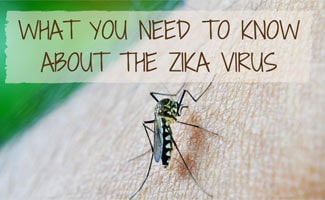Is Sodium Fluoride Dangerous? Risks and Benefits Analyzed
 I remember going to the dentist as a kid and dreading the experience. Why? Not that any kid loves going to the dentist, but I was definitely ending up with cavities more often than not. This continued into adulthood unfortunately, and when I asked the dentist what I was doing wrong, he would explain to me that I had “strong gums, but weak teeth,” and that people were typically born with one or the other combination. Great, I thought. Well, at least I don’t have to worry about gum disease.
I remember going to the dentist as a kid and dreading the experience. Why? Not that any kid loves going to the dentist, but I was definitely ending up with cavities more often than not. This continued into adulthood unfortunately, and when I asked the dentist what I was doing wrong, he would explain to me that I had “strong gums, but weak teeth,” and that people were typically born with one or the other combination. Great, I thought. Well, at least I don’t have to worry about gum disease.
“What toothpaste do you recommend I use?” I asked the dentist, thinking that must be the culprit of my many cavities. He would reply with “it doesn’t matter, as long as you have flavor and fluoride.” Sodium fluoride has long been known to be a cavity fighter. And to my knowledge was never really a health concern until recently. But while this stuff is present in our drinking water here in the United States, it has been classified as a toxin in other countries. So which is it? Is sodium fluoride good or bad for you? Does it help prevent cavities, or does it cause cancer?
What is Fluoride and Where Does it Come From?
Fluorides, such as sodium fluoride, stannous fluoride, and fluoride monofluorophosphate (MFP fluoride), are created when the element fluorine combines with a metal or other substance. Fluorides are absorbed into the blood via your digestive tract, where they then travel and collect in high calcium regions such as your teeth and bones. Fluorides occur naturally in the air, water, as well as the earth. The fluoride in your body is mostly from water, food, fish, tea, coffee, dental products, you can even get some fluoride by using teflon-coated pans (who knew?!?).
Does Sodium Fluoride Help Prevent Cavities?
Yes, that’s a well established fact. In 1945 water fluoridation began in the U.S. because scientists discovered a lessening of cavities in areas with fluoridated water (commonly referred to as “florinated water”). In my own experience, I went through rigorous research to find out what may be causing my cavities, and finally came up with a dental hygiene regimen that has left me cavity free for several years now.
My Cavity-Free Teeth Tips
- I floss 1 to 2 times per day and use a water pik (specifically the Waterpik Aquarius Water Flosser (WP-660) at night. According to my dentist, the flossing gets at bacteria under the gums that the Waterpik can’t reach, and the Waterpik can remove stubborn pieces of food from between your teeth that the floss can’t get out, so they’re mutually beneficial.
- I only brush once to twice per day, only after flossing, and at least 30 minutes after eating. If eating any highly acidic foods such as citrus fruits, I will wait at least an hour before brushing (this is from the research I found that indicates that some of the ingredients in toothpaste can interact with the acids and actually erode the enamel on teeth).
- But the biggest culprit of all may be that I have trouble breathing through my nose at night. Saliva acts as a natural protectant for your teeth I learned. By breathing with my mouth open all night, my teeth would be exposed to dry air and therefore more susceptible to cavities. To remedy this I took two steps. First I purchased some Breathe Right Nasal Strips, which, while not perfect, do help me breathe easier. Second, I started to use a Neti Pot on a regular basis. I was always skeptical of this, but when used before going to bed I find that I breathe much better and don’t wake up with a dry mouth.
- My dentist also recommended I swish with ACT Restoring Mouthwash before going to bed, which contains a sodium fluoride solution.
Is Sodium Fluoride Dangerous?
So here I am content that I finally found a solution to my “strong gums, weak teeth” dilemma. And along comes a bunch of research suggesting that sodium fluoride is actually dangerous to our health (read: it’s a toxin). If “fluoride and flavor” is so good for our teeth, then what’s wrong with sodium fluoride? Recent research has shown that fluoride in high doses can be toxic. But isn’t that true of a lot of things we’re exposed to? Just what is a “high dose”? And what about long, chronic exposure to small doses? In other words, how “long” of a time-span do these research studies address? After consulting my dentist (who is, shockingly, pro-fluoride), and other health professionals, I found very few who were willing to take a negative stance on fluoride. So I’ve delved into my own research. Here are some sources I’ve come across:
- Wikipedia – Fluorides are rapidly absorbed, and interfere with electron transport and calcium metabolism. Large ingestion of fluoride salts or hydrofluoric acid may result in fatal arrhythmias. Chronic over-absorption can cause hardening of bones, calcification of ligaments, and buildup on teeth. Fluoride can cause irritation or corrosion to eyes, skin, and nasal membranes. The lethal dose for a 70 kg (154 lb) human is estimated at 5–10 g. Sodium fluoride is classed as toxic by both inhalation (of dusts or aerosols) and ingestion. In high enough doses, it has been shown to affect the heart and circulatory system. For occupational exposures, the Occupational Safety and Health Administration and the National Institute for Occupational Safety and Health have established occupational exposure limits at 2.5 mg/m3 over an 8 hour time-weighted average.
- Cancer.org – The maximum allowed level of sodium fluoride in our drinking water is 4.0 mg/L, set by the EPA (Environmental Protection Agency), for adults, and 2.0 mg/L for children under the age of 9. The recommended dose for drinking water is 0.7 mg/L, set by the US Dept of Health and Human Services (this used to be higher, but since we get fluoride from other sources now, such as toothpaste, this recommendation was lowered from a range of 0.7 – 1.2 mg/L in 2011). Natural drinking water sources in the US have an average fluoride level of about 0.2 mg/L, although in some places it can be much higher. The natural levels of fluoride in water in some places can be even higher than 4 mg/L. Community water systems in such areas are required to lower the fluoride level below the acceptable standard. But the levels in private water sources, such as wells, may still be higher. In other words, if you’re concerned about fluoride exposure, you might actually be getting less fluoride via the “fluoridated water” from your city! Fluoride addition to drinking water is a local (city/municipality) decision, about 2/3 of Americans have access to fluoridated water.
- MayoClinic.org – The Mayo Clinic is almost an outright advertisement for taking more sodium fluoride. It lists brand names of products that include sodium flouride such as Aquafresh, Denta 5000 Plus, Ethedent, and Fluoridex. Suprisingly, they actually list a recommended daily dose of fluoride: birth to 3 years of age: 0.1 to 1.5 milligrams (mg); 4 to 6 years of age: 1 to 2.5 mg; 7 to 10 years of age: 1.5 to 2.5 mg; adolescents and adults: 1.5 to 4 mg! That’s when we just learned that 4 mg can be a lethal dose. Say what? I noticed that in small print at the top of the page it says “Drug information provided by: Micromedex.” Pharmaceuticals giving profits priority over our health? That never happens, right? Argh!
- FluorideAlert.org – On the very anti-fluoride side of the debate, there are several websites such as this one taking an aggressive stance against sodium fluoride. Their main objective appears to be to reduce the amount of fluoride we ingest, as opposed to the flouride we apply topically (ie don’t swallow). FlourideAlert is concerned with the long-term chronic effects of sodium fluoride ingestion, particularly with people that drink great amounts of flouridated water or are exposed to industrial versions of fluoride.
- The Fluoride Deception– this book covers extensively the problems with fluoridation, and goes as far as to discuss the environmental concerns and damage that’s been done. While I haven’t read this, I plan to if I find the time. It receives, at the time of this writing, 5 stars from 77 reviewers. One thing I noticed in the comments was remarks from people with thyroid problems and how that could be related to over-fluoridation.
- PrisonPlanet.com – another site that takes a very aggressive anti-fluoride stance, going so far as to call it a government conspiracy. They call fluoridated water the “poison tap water” and mention everything from cancer to lowering of IQ. I’ll let you read that page for your own entertainment/ knowledge gathering.
- My Dentist – last but not least, my dentist is obviously a huge proponent of fluoride. Even the dental assistant went on to discuss how “systemic” (ingested) fluoride, also known as skeletal fluoride, is beneficial to skeletal and bone formation. It didn’t occur to me that ingested fluoride (which is the source of much of the fluoride controversy) could be beneficial. I was under the impression that only a topical application was good for your teeth.
Out of all these sites I found Cancer.org one to be the most useful and well-balanced, although I was impressed by the depth of research contained on FluorideAlert.org. It has made me think more about the potential long-term/chronic effects of regular sodium fluoride exposure. It seems to me that the biggest concern has to do with ingestion of fluoride vs topical application. I’m curious to hear your thoughts and opinions in the comments below – know of any key sources of information that I missed (I’m sure there are many!)?
This next video by a state representative who also happens to be a doctor, focuses on the point of ingestion (via our drinking water) vs topical application (toothpaste and mouth rinses) and the potentially detrimental effects of ingestion on children.
Joe Hensley, M.D. and State Representative, on the Dangers of Fluoride [VIDEO]
https://www.youtube.com/embed/ZvAAaAAHNvo
Sodium Fluoride Poisoning
So let’s say you do get too much sodium fluoride. What’s the worst that can happen? From my research, here’s some of the ugly stuff you can get:
Skeletal/Dental Fluorosis
Many reputable websites mention these ailments. Skeletal fluorosis is excess fluoride build up in the bones. This can eventually result in joint stiffness and pain, and can also lead to weak bones or fractures in older adults. In children, this can result in dental fluorosis, excess fluoride build up in the teeth, which prevents enamel from forming normally. This can cause permanent staining or pitting of teeth.
Other websites go as far as to mention arthritis, cancer, diabetes, endocrine disruption, kidney disease, male fertility, thyroid disease, and more. But my question is, if people have been ingesting sodium fluoride (and other fluorides) since World War II, and there are such serious long term side effects, wouldn’t we be hearing more about them by now?
How to Reduce Your Fluoride Exposure?
 The best way to reduce your fluoride exposure, and particularly your fluoride ingestion (vs the fluoride you rinse with and spit out, for example), is to find out how much fluoride is in your everyday drinking water. Note that tap water, well water, and even spring or bottled water can all have higher or lower amounts of fluoride. As mentioned above, tap water, the only regulated source, does not always have the highest fluoridation content. What it does have is a guaranteed ceiling.
The best way to reduce your fluoride exposure, and particularly your fluoride ingestion (vs the fluoride you rinse with and spit out, for example), is to find out how much fluoride is in your everyday drinking water. Note that tap water, well water, and even spring or bottled water can all have higher or lower amounts of fluoride. As mentioned above, tap water, the only regulated source, does not always have the highest fluoridation content. What it does have is a guaranteed ceiling.
So, if your drinking water comes from a public source, contact your local community water system to find out how much fluoride is in it. I called our own city’s water department and they promptly returned my call explaining that our citywide fluoride levels are 0.5-0.7 milligrams per liter (or parts per million). As a public water customer you also have access to an annual Consumer Confidence Report on water quality. You’ll find out all the chemicals that are in your drinking water, not just fluoride. Call the EPA’s Safe Drinking Water Hotline at 1-800-426-4791 to find out more about drinking water safety in general, you may unearth something important I haven’t covered (if you do, please share it with me and our readers below). If you get your drinking water from a private source such as a well, you can hire a laboratory to come out and test fluoride levels.
Should I Remove Fluoride From My Drinking Water?
My integrative doctor is on the anti-fluoride bandwagon and a proponent of so called reverse osmosis filters (such as this one: APEC 5-Stage Reverse Osmosis Drinking Water Filter System (ROES-50) that remove fluoride and other toxins from your drinking water. However, I’ve also talked to experts who say those filters are typically used by bottled water companies and will removing everything from water, making it a useless clear liquid only good for hydration. In other words, valuable minerals and salts that are good for you are also removed.
Fluoride Free Toothpaste?
If fluoride is still too scary for you, here are some fluoride-free toothpastes I’ve found:
Are There Alternatives to Sodium Fluoride?
Oil Pulling
Oil pulling is an ancient Ayurvedic detoxification practice of swishing around of sesame or coconut oil in your mouth daily for 15-20 minutes once a day. In addition to body cleansing, it is supposed to help dental and oral health. However, the ADA (American Dental Association) recommends against this for any sort of dental care. On the other hand, my wife’s dentist said it could not hurt and would likely reduce dry mouth symptoms. So, she felt oil pulling was worth a shot for anyone who was interested in trying it for any or all of its benefits. We have an article on essential oils that goes in-depth on the powers of oils and their health properties if you’re interested.
Triclosan
If you’ve heard that fluoride may be dangerous, you’ve probably also heard about triclosan (a chemical found in Colgate, for example). While there’s no definite research proving it’s dangerous, you can read our article on triclosan dangers and judge for yourself. Lastly, we’ve got a whole series of articles on holistic healing that address potentially harmful elements we’re exposed to on a daily basis and how to defend against them.
What are your experiences with sodium fluoride? Are you for or against its use?



